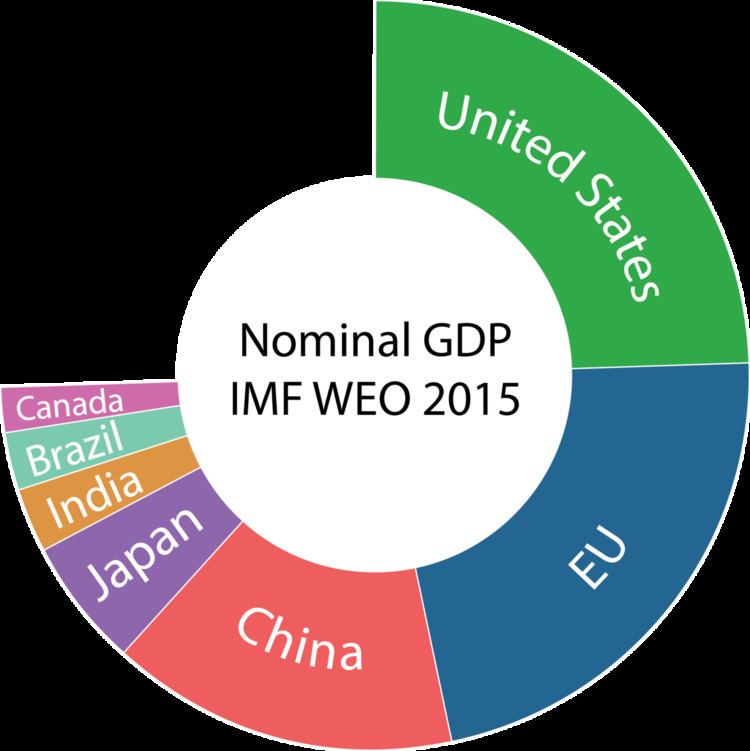 | ||
Gross domestic product (GDP) is the market value of all final goods and services from a nation in a given year. Countries are sorted by nominal GDP estimates from financial and statistical institutions, which are calculated at market or government official exchange rates. Nominal GDP does not take into account differences in the cost of living in different countries, and the results can vary greatly from one year to another based on fluctuations in the exchange rates of the country's currency. Such fluctuations may change a country's ranking from one year to the next, even though they often make little or no difference in the standard of living of its population.
Comparisons of national wealth are also frequently made on the basis of purchasing power parity (PPP), to adjust for differences in the cost of living in different countries. PPP largely removes the exchange rate problem, but has its own drawbacks; it does not reflect the value of economic output in international trade, and it also requires more estimation than nominal GDP. On the whole, PPP per capita figures are less spread than nominal GDP per capita figures.
The United States is the world's largest economy with a GDP of approximately $18.56 trillion, notably due to high average incomes, a large population, capital investment, moderate unemployment, high consumer spending, a relatively young population, and technological innovation. Tuvalu is the world's smallest national economy with a GDP of about $32 million because of its very small population, a lack of natural resources, reliance on foreign aid, negligible capital investment, demographic problems, and low average incomes.
Although the rankings of national economies have changed considerably over time, the United States has maintained its top position since the Gilded Age, a time period in which its economy saw rapid expansion, surpassing the British Empire and Qing dynasty in aggregate output. Since China's transition to a market-based economy through privatisation and deregulation, the country has seen its ranking increase from ninth in 1978 to second to only the United States in 2016 as economic growth accelerated and its share of global nominal GDP surged from 2% in 1980 to 15% in 2016. India has also experienced a similar economic boom since the implementation of neoliberal reforms in the early 1990s. When supranational entities are included, the European Union is the second largest economy in the world. It was the largest from 2004, when ten countries joined the union, to 2014, after which it was surpassed by the United States.
The first list largely includes data compiled by the International Monetary Fund's World Economic Outlook for 2016, the second list shows the World Bank's 2015 estimates, the third list includes data compiled by the United Nations Statistics Division for 2013, and the fourth list includes mostly 2015 estimates from The World Factbook by the Central Intelligence Agency. Several economies which are not considered to be countries (the world, the European Union, and some dependent territories) are included in the lists because they appear in the sources as distinct economies. These economies are italicized and not ranked in the charts, but are listed where applicable.
